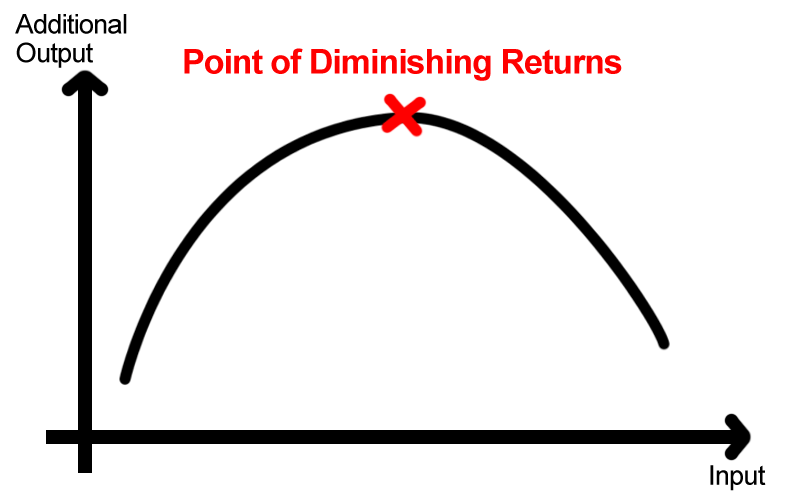
Our other article on Strategies for Managing Resistance to Change explained the four types of resistance and the six classic strategies for dealing with resistance. It was based on the fundamental research conducted by Kotter & Schlesinger back in the late 80s. As a complement to those theory-based strategies, below are nine techniques for overcoming change resistance. Incorporate these as part of the overall change management strategy for your next major initiative.
Address Personal Concerns
Most companies justify the need for change by telling employees about all of the wonderful things the change will mean for the organization. This is a weak approach to gaining audience buy‐in. When faced with a change, people react first with their own concerns: “What’s in it for me?” “Does this mean I’ll have a different role?” “Will this break up our department?” So, first things first. Deal with personal concerns first, before organizational benefits.
Link the Change to Issues People Care About
Increase the perceived need for a change by linking it to other issues that people already care about. For example, by showing how a change is connected to issues of health, environmental sustainability, job security, and other things that are already in the front of people’s minds, you can increase the “stickiness” for change.
Tap into the Desire to Avoid Loss
People are more attune to loss than to gain. This “negativity bias” is a longstanding survival trait that has kept humans alive throughout their development as a species. Historically, it was always more important to avoid stepping on a snake than to find a soft place to sleep. Humans may have advanced in many ways, but something scary still gets and holds attention more quickly and longer than something pleasant. Therefore, rather than just telling people what they stand to gain from a change, you may have a greater impact by telling them what they stand to lose if they don’t accept the change. Also, see our article on using threat-opportunity analysis.
Cater to People’s Expectations
People generally hold firm views of how the world works. These “mental models” govern much of people’s thinking including how they perceive a potential change. For example, they may tend to see a change as something good about to happen and willingly accept it, or they may see a change as something bad about to happen and focus their energy on avoiding loss. You can provide all the logical arguments in the world in support of change, but if your arguments don’t match the basic assumptions and rules to the way the person sees the world, you aren’t likely to get far. Additionally, people hold fast to their current beliefs, desires, or feelings; this means that if the change you are promoting doesn’t appeal to their current beliefs, desires, or feelings, you may have a hard time making any headway.
Take Advantage of Natural Biases
People tend to see things that are happening now as more urgent than those that will happen in the future. This tendency is often referred to as “discounting the future.” For instance, when presented with the option of getting $500 now or $750 in a year (a 50% rate of interest), the average person will choose the $500 now. This suggests that when trying to persuade others that a change is necessary, even though the future threat and loss may be great, it is desirable to emphasize that inaction now poses its own threat and loss. Also, it is often easier to get people to agree now on a solution, if they can postpone implementation until some time in the future. People tend to believe that they will be in a better position to change in the future; they expect to have more time, more money, and fewer demands then than they do now. While experience does not support this belief, it is one that provides people with the motivation to act in the present toward a future goal. Therefore, it is often easier to get people to agree now on a change that won’t take place until some point in the future.
State the Change in Concrete Terms
Often organizational changes are responses to some sort of threat. If that threat is seen as more relevant to others outside the company than to the employees, or if the threat is presented in the abstract, then employees will have little motivation to change. However, if you can demonstrate in concrete terms that the threat is local and will have a real impact on employees, you may find it easier to persuade them to buy‐in. For instance, when people think about the threat of pollution, many think of it as a threat to other people and other places. In a situation like this, getting people to adopt inconvenient changes, such recycling, is difficult. On the other hand, if you can show them with concrete examples exactly how recycling will positively impact them in their local community, then they are more likely to adopt the necessary changes.
Appeal to the Entire Brain
Often, when making a case for a change, leaders use lots of numbers, charts, tables, etc. Such facts and figures appeal especially to one side of the brain. But the human brain has two sides, and although they work together, each has a different way of processing information. The left side is analytical and controls the processing of quantitative information. The right side is experiential and controls the processing of emotional information. Even for audiences where one side may dominate (e.g., engineers who favor facts and figures), the most effective communication targets both sides of the brain. To appeal to both sides of the brain, you might consider:
- Combining analytic information with vivid imagery in the form of film footage, metaphors, personal accounts, real‐world analogies, and concrete comparisons
- Employing messages designed to emphasize relevant personal experience and elicit an emotional response.
Also, see our article on using heart and mind appeal.
Beware of Change Saturation
While connecting with people’s emotional side, it is important not to overload with too much change. People can attend to only a limited number of things. Much like pouring water into a sponge, at first the sponge can absorb the water. However, at some point, the sponge becomes full and any additional water simply runs off. The finite pool of worry is full. This has implications for leaders. Often people’s lives are already filled with change. When you ask that they worry about more things, you may inadvertently introduce “emotional numbing,” a state in which people fail to respond to anything except threats that are immediate. So, beware of overusing emotional appeals, particularly those relying on fear.
Know Your Change
Not all changes are equal. Some are more beneficial, and some cause more inconvenience and pain. It is important for change agents to know how their change stacks up against six change characteristics:
- Simple: Is your change complex or is it relatively simple to understand and do?
- Compatible: Is your change compatible with what your people are used to?
- Better: Does your change offer clear advantages over other alternatives, including the status quo?
- Adaptable: Can people adapt your change to their own circumstances or must they do it exactly the way you prescribe?
- Painful: Does your change alter social relationships in any way by changing where people work, who they deal with, or how they spend their time?
- Divisible: Can you break the change you offer into smaller parts or phases, or must audiences implement it all at one time?
When judging your change against these characteristics, note that any change can have both positive and negative aspects in the same characteristic. For instance, a change might be relatively advantageous in one way and be relatively disadvantageous in another. Also, as you evaluate these characteristics, do so from your employees’ perspective. You need to understand the change from the point of view of those who will feel it most acutely.
>> Download the Stakeholder Engagement Strategy Tool Pack to help you analyze and prioritize your initiative’s employees, identify appropriate engagement methods, and develop a tactical engagement plan.












One comment
Pingback: » Strategies for Managing Resistance to Change